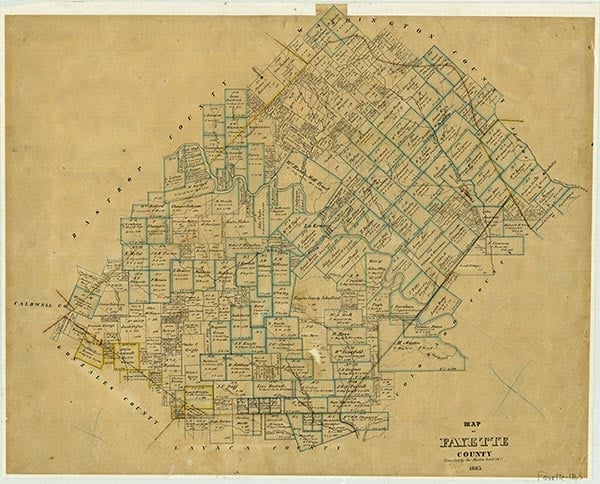Oldenburg

High Hill is on Farm Road 2672 fourteen miles southwest of La Grange in southwestern Fayette County. The area was originally part of the E. Anderson league and was settled in the 1830s. Around the late 1840s German immigrants established two small settlements, Blum Hill and Oldenburg, and High Hill eventually grew out of them. Blum Hill, at a site that would become the southern part of High Hill, was named for left-wing political activist Robert B. Blum, who was assassinated in 1848. Oldenburg, in what would become the northern part of High Hill, was named for a German province. Early settlers in the area were German and Austrian-Moravian and included the Heinrich, Kleinemann, Seydler, Ebeling, Hillje, Siems, Steurcke, and Nordhausen families. Henry Ebeling opened a store in Oldenburg in 1847, and John F. Hillje was operating a cotton gin and gristmill in the community by 1856. In 1860 the community was granted a post office with the name High Hill. High Hill had a local Turnverein. Two private schools existed in the community; Mrs. August Richter directed the community dramatic players; and the Männer choir and orchestra were in great demand at the state Sänger Fests. In 1869 the community comprised six stores, three blacksmith and wheelwright shops, a hotel, and a brewery. According to some sources, residents of High Hill refused to allow the Galveston, Harrisburg and San Antonio Railway to build through their community in 1874, fearing that the railroad would destroy the tranquility and culture of the town, but with the building of the line to nearby Schulenburg, many of High Hill's residents moved there. A Catholic church had been constructed at High Hill by 1879, and by 1884 the town had 200 residents, four schools (including a Catholic parochial school), two saloons, two general stores, a church, and a steam gristmill and cotton gin. In 1900 the community reported a population of 134. The post office closed in 1907, and by 1940 High Hill had a population of seventy-five, a church, a school, and three businesses. From the 1960s through 2000 the unincorporated town reported a population of 116. In 2000 the town had three historical markers, and St. Mary's Catholic Church was on the National Register of Historic Places. The church, which celebrated its 125th birthday in 1985, is the focal point for a town celebration every Sunday before Labor Day.
Mark Odintz | © TSHA

Adapted from the official Handbook of Texas, a state encyclopedia developed by Texas State Historical Association (TSHA). It is an authoritative source of trusted historical records.

- ✅ Adoption Status:
- This place is available for adoption! Available for adoption!
- Adopted by:
- Your name goes here
- Dedication Message:
- Your message goes here
Belongs to
Oldenburg is part of or belongs to the following places:
Currently Exists
No
Place type
Oldenburg is classified as a Town
Associated Names
- [1]
- (High Hill)
Has Post Office
No
Is Incorporated
No
